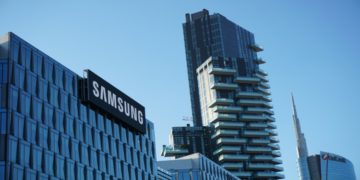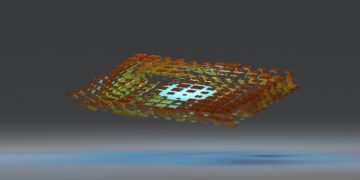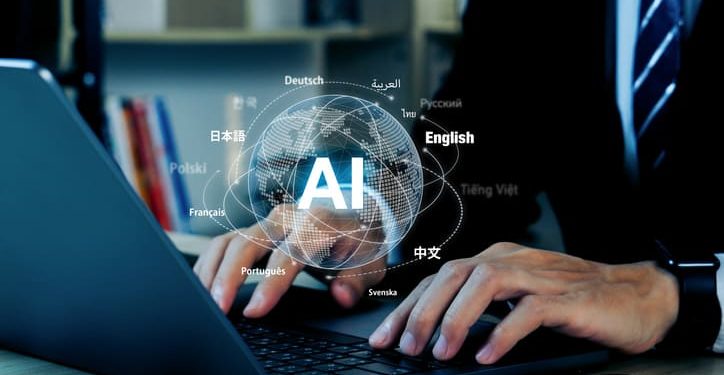As cities continue to grow at an unprecedented pace, the challenge of creating sustainable, effective, and livable urban environments grows more complicated. The requirement to balance housing, transportation, utilities, green space, and economic areas on limited explicitly prescribed land areas has compelled urban planners to look beyond conventional practices. Artificial Intelligence (AI) has developed a prominent role as one of the most powerful transformative forces in Urban Infrastructure planning, influencing how cities are designed, analyzed, and optimized for all disciplines in the future.
The Move to AI Competence
The traditional practice of urban planning is characterized by the reliance on manual data analysis, very long approval cycles, and static design principles. Today’s urban planners are now transitioned to using AI to automate workflows, predicting outcomes, and visualizing living and breathing urban scenarios before they place the community. AI empowers urban planners to utilize large datasets for everything from movement patterns to energy consumption—to make better, smarter decisions for more dynamic, adaptive, and resilient cities.
In various regions, urban development is generated using data-driven design and digital modeling. AI does not simply aid in decision making, but actively derives masterplans, bottleneck situations and proposes sustainable design options that humans do not see. This has provided cities to evolve faster, and more aggregately intelligent for rising populations and environmental issues.
AI and Predictive Modeling: Safer Infrastructure for Cities
One of the most significant benefits AI has brought to Urban Infrastructure is predictive capabilities. Utilizing machine learning algorithms, AI can sift through endless amounts of historical and real-time data to help predict future concerns surrounding shifts in population density, energy demand, or transportation needs. As a result, urban planners can prioritize and develop smart scalable infrastructure in conjunction with the city’s population growth.
Predictive AI models can quantify the future implications of newly constructed transit routes or concentration of residential properties, and can reveal the ensuing changes in anticipated traffic flow, pollution levels, or sound levels. This predictive ability can save municipalities considerable amounts of taxpayer dollars by facilitating fast and more efficient resource allocation; and reduce instances of expensive errors of omission and commission, during the build up and expansion of urban infrastructure. Many cities, at present, are piloting or testing digital twin technologies, to trial conditional factors before construction begins thereby improving the speed and efficiency of the urban infrastructure planning process.
Data-Driven Decision Making in Urban Infrastructure Projects
The decision-making process behind urban infrastructure developments has transitioned from a focus on subjective ideation to one based entirely on data. Current AI tools enable data scientists and urban planners to collect, cleansing, and interpret data from various sources, including IoT sensors, satellite imagery, and geospatial analytics. Taken together, cities can optimize their methods, confidence intervals, and thinking with respect to everything from road layouts to waste management systems.
Some cities are using AI to automatically detect air quality and modify traffic signals to relieve congestion caused by emissions. Likewise, AI-supported predictive maintenance systems can identify early signs of wear in public infrastructure like bridges, pipelines, and transit systems, thus avoiding costly shutdowns and ensuring public safety. Such proactive technologies are likely to expand significantly as cities seek new innovations toward smarter, more efficient infrastructure systems.
AI-driven Design and Simulation Tools
AI is also changing the design process itself. Software, such as Architecture Masterplan Software, reframes how architects and planners are able to collaborate. These software packages incorporate AI simulation capabilities that immediately query design decisions (building orientation, density, energy usage, etc.) on sustainability and livability measures.
This application leverages technology to quickly test design options in the span of minutes rather than weeks and gives assurances that projects will achieve the best results in aesthetics alongside performance. Moreover, the automation of repetitive tasks allows professionals to shift their priorities to the creative and strategic thinking that humans engage in and machines cannot.
Sustainability and Climate Resilience
Sustainable infrastructure has emerged to be among the highest priorities as climate change rearranges the urban landscape. Through the application of AI (that can analyze environmental data such as temperature patterns, flood risk, or solar exposure), planners can build cities that are not only functional but also environmentally responsible, providing suggested building placement, green corridor layout, and materials that could have a lower carbon footprint.
Cities like Singapore and Amsterdam have been leaders in the AI planning space and the use of environmental modeling in Urban Infrastructure projects. Creating resilience for the long-term while meeting international requirements for carbon-neutrality and efficiency in infrastructure and resources is assured. Many local governments have also begun factoring AI-based sustainability metrics into their masterplans to ensure they are meeting superior environmental standards.
Increased Participation of the Public in Decision Making and Policy Development
AI is not beneficial only to the planners and architects, but to citizens and the policymaking process, as well. AI-based public engagement tools allow communities to show and then comment on proposed developments, through a 3D model and virtual simulation. The result is a more transparent and inclusive planning process.
Policymakers will be able to then use AI-based dashboards to test the impacts of zoning changes, transportation improvements, and sustainability features before they are enacted. The evidence enables them to ensure their decision-making is fair and accessible, efficient, and for the future.
Constraints on Applying AI to Urban Infrastructure
The realization of the potential of AI for urban planning does come with constraints. Data privacy, transparency of models, and the labor force to operate them, are just a few of the more pressing issues. Moreover, there are costs associated with installing AI systems, which poses barriers for smaller municipalities on limited budgets.
However, collaborations between governments, profit-seeking technology companies, and educational institutions are gradually bridging the gaps created by these important problems. In the long term, the potential benefits AI can provide in reduced costs, prudent use of resources, and the construction of a framework for a greener and more resilient future should outweigh the initial problems.
Real-world applications and future potential
Worldwide, smart city projects are using AI to create more sustainable urban systems. AI is bringing us into a new era of smart urban systems – from analytics in transportation to automated energy grids. As the technology advances, planners will be able to simulate an entire city ecosystem and optimize everything from public services to parks in real time.
AI’s incorporation into Urban Infrastructure will expand alongside a multitude of tech (including blockchain, augmented reality, and renewable energy systems). This is a clear vision – constructing livable urban ecosystems of today that are sustainable for future generations.
Concluding Remarks
AI is revolutionizing Urban Infrastructure at all scales, through everything from predictive modeling and sustainable design, to community engagement. We can now actually adopt methodologies involving new architecture masterplan software that will enable urban planners and architects to convert data management into meaningful insight to ensure our future cities will be smarter, greener and more human-centered.
With the growing trend of urbanization, the consideration of implementing AI as a process of figuring infrastructure planning is no longer a choice. Urban planners and architects need AI to amplify our ability to create resilient, adaptive cities that will flourish in a changing world.











































































